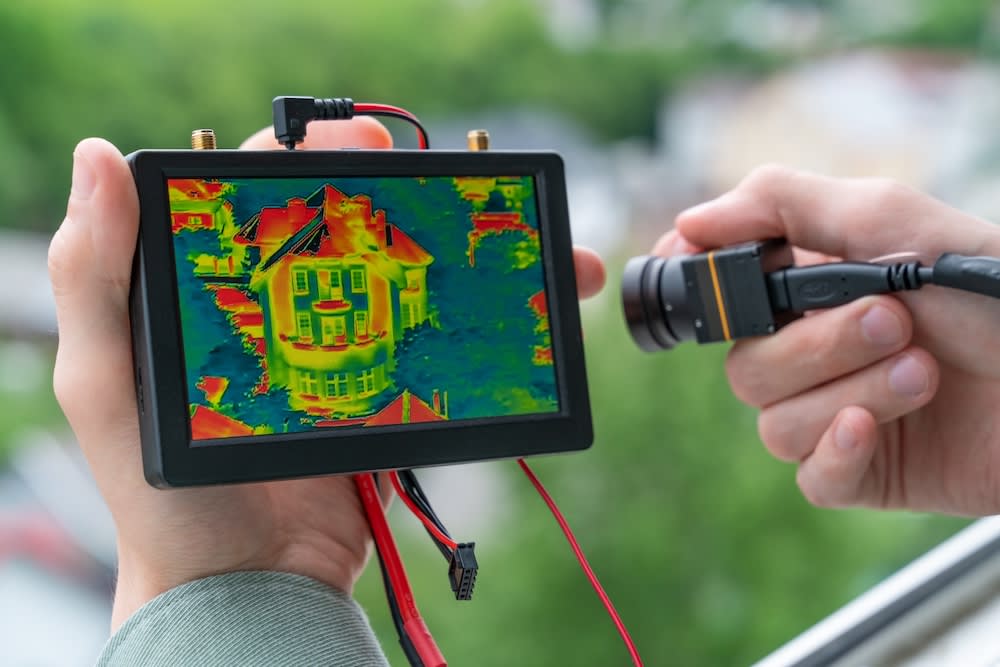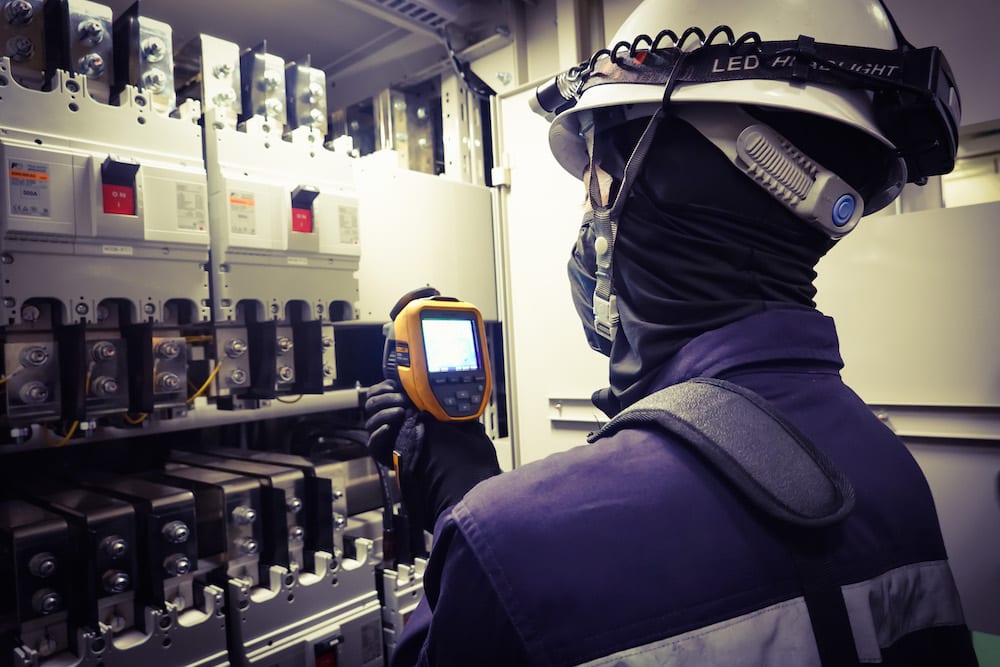- Published Feb 21, 2024
- Last Modified Apr 4, 2024
- 5 min
Applications of Thermal Imaging in Building Inspections
Elevate building inspections with thermal imaging technology. Discover how thermal cameras uncover hidden issues for safety and efficiency.

In the Philippines, where building integrity and safety are paramount, the significance of thorough building inspections cannot be overstated. In fact, adhering to the National Building Code (Presidential Decree No. 1096), every building owner issued a building permit is mandated to enlist the expertise of a licensed architect or civil engineer for full-time inspection and supervision of construction works. This stringent regulation underscores the country's commitment to ensuring the safety of its infrastructure.
In addition, in line with this commitment to structural integrity, the Cebu City Mayor even initiated a sweeping directive for the Office of the Building Official (OBO) to perform extensive inspections and assessments of buildings and structures within the city. This move, aimed at gauging building resilience, was a proactive measure to prepare for potential calamities that could compromise structural integrity.
In contexts such as these, thermal imaging emerges as one of the crucial tools, playing an instrumental role in enhancing the effectiveness and thoroughness of such building inspections. But what are the uses of leveraging thermal imaging technology, and what types of hidden issues can inspectors uncover that could contribute significantly to the safety and durability of buildings in the Philippines?

What is Thermal Imaging?
But first, what is thermal imaging, and why is it increasingly becoming a pivotal tool in building inspections and public safety?
Thermal imaging operates by capturing the infrared energy emitted by all objects. This energy, which is a part of the electromagnetic spectrum, varies based on the object's temperature and other characteristics. Infrared cameras detect this energy, allowing them to depict temperature differences on surfaces.
Unlike traditional methods, thermal imaging reveals disparities in surface temperatures, uncovering issues invisible to the naked eye. This capability makes thermal imaging invaluable for identifying a range of problems, from unexpected air leaks, insulation deficiencies, and moisture issues to HVAC system malfunctions, electrical faults, and more.
Beyond these capabilities, the non-invasive nature of thermal imaging makes it an essential tool for energy audits, building restoration, and general inspections. This is because it enables professionals to detect, monitor, and document various issues without the need for costly and destructive testing methods. As a result of this, thermal imaging cameras have evolved to become not just tools for problem detection but also instruments for ensuring safety, efficiency, and proper maintenance of buildings.
Application of Thermal Imaging
Thermal imaging technology offers a broad spectrum of applications, particularly when it comes to building inspections. As mentioned, this innovative equipment enables quick and accurate identification of various structural defects and issues, often hidden from conventional inspection methods.
Some of the aspects within which it can provide a comprehensive solution to various inspection challenges include:

1. Detecting Air Leaks
Air leaks, often undetectable to the naked eye, can significantly impact a building's energy efficiency. However, thermal imaging cameras are exceptionally adept at identifying these leaks within a building.
Since thermal cameras work by detecting temperature variations, they can inform you of colder areas via thermal images, indicating spots where cold air is entering or warm air is escaping. This capability is particularly useful in spotting air leaks around windows and other potential breach points in the building envelope. By pinpointing these leaks, thermal imaging enables precise corrective actions to be taken, thereby enhancing the building's overall energy conservation and comfort levels.
2. Uncovering Insulation Issues
Poor insulation in a building can lead to significant energy losses, directly affecting heating and cooling efficiency and costs. This is where thermal imaging cameras can come in to efficiently address this problem.
Insulation defects, whether due to damage, settling, or absence, create distinct thermal patterns compared to the rest of a structure. By capturing these temperature variations, these cameras can visually highlight areas where insulation is inadequate or missing. This process allows inspectors to pinpoint specific locations where heat is escaping, or cold air is infiltrating, even in hard-to-reach areas — eventually helping to address insulation problems efficiently.
3. Moisture Detection
Thermal imaging cameras are also exceptional tools for detecting moisture in building structures, including roofing, walls, and floors.
Since moisture affects the thermal capacitance of building materials, it is relatively straightforward to identify with a thermal camera. For instance, moisture in walls and floors may result in slower temperature changes, making these areas distinctly cooler or warmer than their surroundings.
Acting as a non-invasive method to identify and address these moisture problems before they escalate into more severe damages, long-term issues like mold growth and structural decay can be prevented ahead of time with the use of thermal imaging technology.
4. Identifying Electrical Overheating
Thermal imaging is instrumental in identifying overheating issues in electrical systems. This is because heat patterns, indicative of problems like loose connections or component failures, are easily visible in thermal images. And the early detection of these electrical issues allows for timely corrections, preventing significant damage or catastrophic failures.
5. Assisting in Efficient Renovation Planning
And finally, thermal imaging can also significantly enhance renovation planning by providing clear insights into a building's existing condition. This technology can validate whether a retrofit or renovation has been executed properly, ensuring that the changes are effective in improving the building's energy efficiency. For example, thermal images can reveal if newly installed insulation is performing optimally or if there are any gaps that need attention. This capability not only saves time during the planning phase but also helps in reducing potential construction costs by pinpointing specific areas needing improvement. In addition, by employing thermal imaging in pre- and post-renovation assessments, building owners and contractors can ensure that their investments in upgrades yield the intended results and contribute to the overall longevity and efficiency of the property.
Elevate Your Building Inspections with RS Philippines
In the critical task of building inspections, having the right tools is essential. RS Philippines understands this need and offers an array of thermal imaging sensors tailored for precise and thorough inspections.
Our commitment doesn't stop at thermal imaging. We also provide a comprehensive selection of testing tools to support thorough building inspections. This includes versatile digital multimeters, conductivity meters, air quality meters, and various diagnostic instruments, all chosen to ensure a complete and accurate assessment of a building's condition.
Choosing RS Philippines means more than just acquiring top-tier equipment; it's about gaining a reliable partner in your building inspection processes. Our expertise and range of products are designed to support businesses in the Philippines in conducting efficient, accurate, and reliable building inspections.
With RS Philippines, elevate your inspection standards and ensure the safety and integrity of your buildings.
Popular Thermal Imaging Equipment Brands
Keysight Technologies
Keysight Technologies accelerates innovation, facilitating faster, cost-effective launches of electronic products across diverse industries worldwide.
Teledyne FLIR
FLIR leads in developing advanced technologies that enhance perception, offering innovative solutions in thermal imaging, diagnostics, and advanced threat detection systems.
Related links
- Fluke Thermal Cameras
- Everything You Need To Know About Thermal Imaging Cameras
- FLIR Battery Charger Power Unit for Use with E4 E6, E8 Thermal Cameras
- Thermal Imaging Cameras
- Flir Thermal Imaging Cameras
- FLIR Charge Base for Use with E4 E6, E8 Thermal Imaging Cameras
- RS PRO RS-979B USB -20 → +550 °C, 256 x 192pixel Detector Resolution
- RS PRO RS-984 USB -20 → +550 °C, 120 x 120pixel Detector Resolution